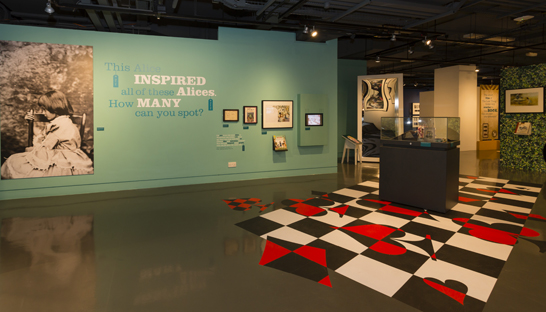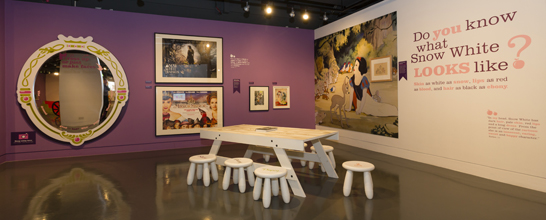Moving Stories: Children’s Books from Page to Screen provides a rare insight into the complex process of adapting children’s books into films. It’s a process to which we probably give little thought, even if the book is a childhood favourite of our own. We are often distracted by elaborate marketing campaigns and familiar logos, and accept that these productions will be both suitable and enjoyable for our children.
However, the phrase ‘suitable for children’ is far more complicated that it appears. Who is this elusive ‘child’ that children’s media is designed for? What are the characteristics of this child, and are they the same for every child?
Can we really generalise about aspects of children’s taste, for example that they all appreciate slapstick comedy or stories that are heavily action-based, or that they do not have the psychological capability to grasp films that lack closure? What characteristics do we tend to impose on our idea of children, and use to shape the films we produce for them?
These are just some of the questions that we can explore through the Moving Stories exhibition.

The issue of what we think is ‘suitable’ for children is a fascinating one, not in the least because of how it changes over time: some of the books produced for children in the Victorian era we would probably never dream of putting in front of our children now, on account of their violence or dubious moral messages.
It’s interesting to think about how different historical and cultural periods have imagined their children, and how the books (and later, films) from these periods show this. Why is it that certain children’s books seem to endure and are adapted more than others?
Recent versions of Alice in Wonderland and Snow White suggest that we perceive these ‘classics’ as relevant to our children today, although—interestingly—newer adaptations of these books have taken on a slightly darker and more surreal tone than previous versions, and this darkness is even more evident in popular new films like the creepy Coraline.

By considering the adaptation process—from page to screen—we can think about the way the writers, producers and animators imagined their child audience. We can ask, ‘why did the producers make those changes or additions, and what does this mean about the audience they had in mind?’
In J.M. Barrie’s original Peter Pan, the Lost Boys hunt and kill wild animals; in Disney’s version, they wear comical Halloween-style animal costumes instead. Why? In the Grimms’ version of Snow White, the wicked queen is forced to dance in red-hot shoes until she dies; what does it suggest about how the intervening years changed our perception of suitability, how Disney imagined children, that they removed this detail?

One great aspect of film adaptation for children is that it keeps alive those works of literature that they might not appreciate or be exposed to otherwise. Alice in Wonderland is actually a rather difficult read, even for adults, because of its surreal nature; Peter Pan is full of adult injokes that children might not understand. By producing film versions specifically for children, we can hopefully encourage them to try the books some day too, once they’ve grasped the basics through the film.
If you’ve never given much thought to what goes on behind the scenes when turning a children’s book into a film or television programme, Moving Stories will hopefully open your eyes to some of the fascinating issues behind this process.
Moving Stories: Children’s Books from Page to Screen is open until 6 October 2013.
I’m actually attempting to write an undergraduate thesis on novel to media adaptations of Alice in Wonderland in the last 50 years. Would you have any suggestions of references that examine this movement towards her more gothic interpretations? Or that support the discussion and analysis of text to film adaptations? If you could offer any support I would greatly appreciate it! This is a topic of great interest to me! Thanks!
Hi Lara
Get in touch with Elly McCausland who wrote this post. Her email address is elly.mccausland@gmail.com.
Emma
Great post and I think the exhibit is better.
I understand this exhibit was way long time ago…but why not ask!!! is there any way I could still see it?